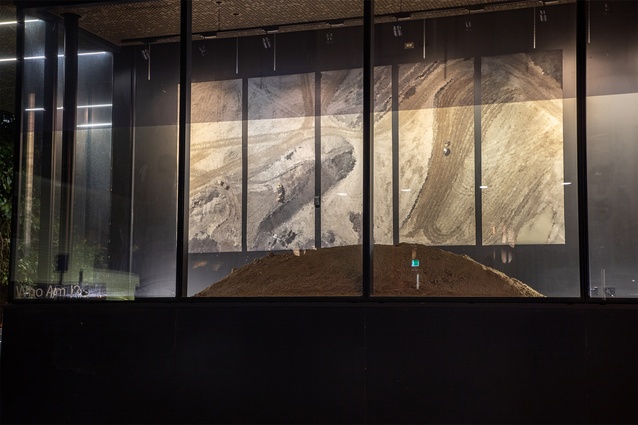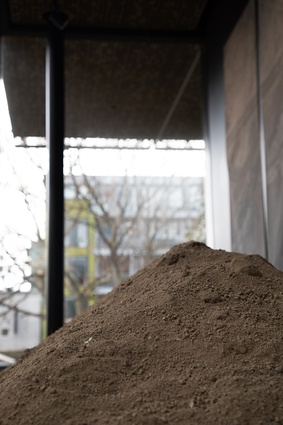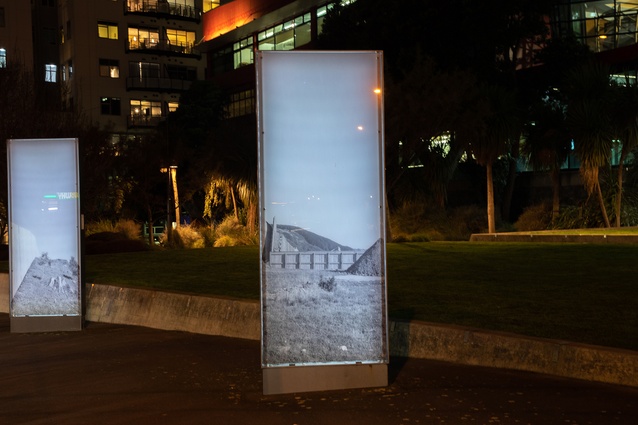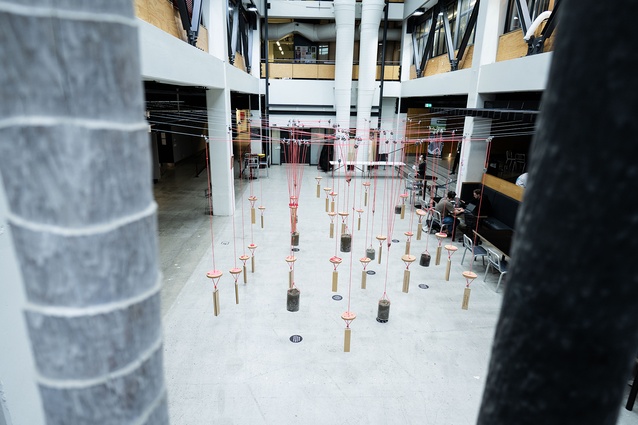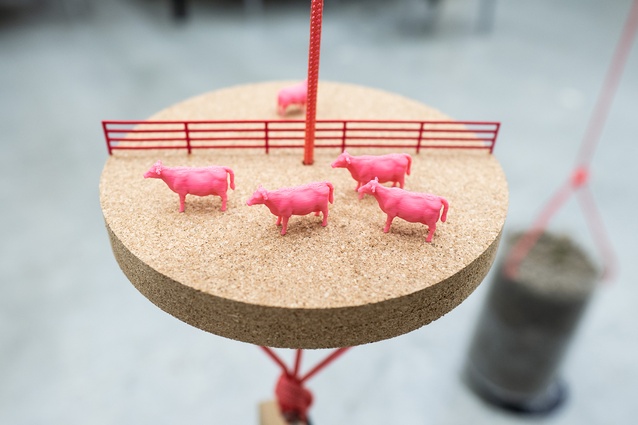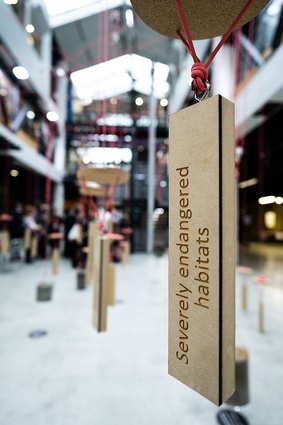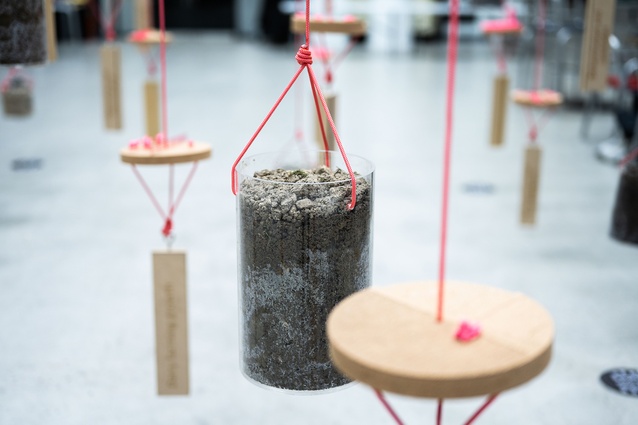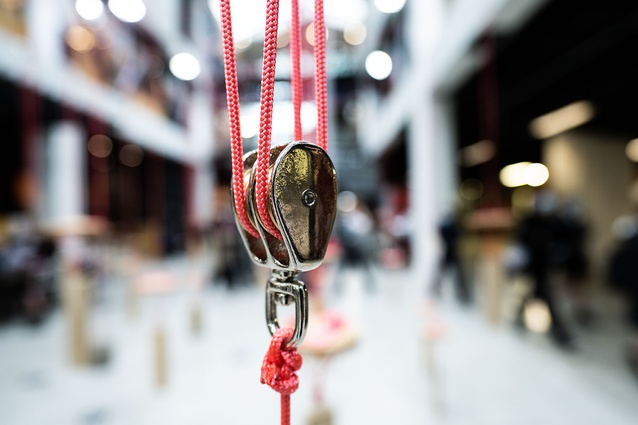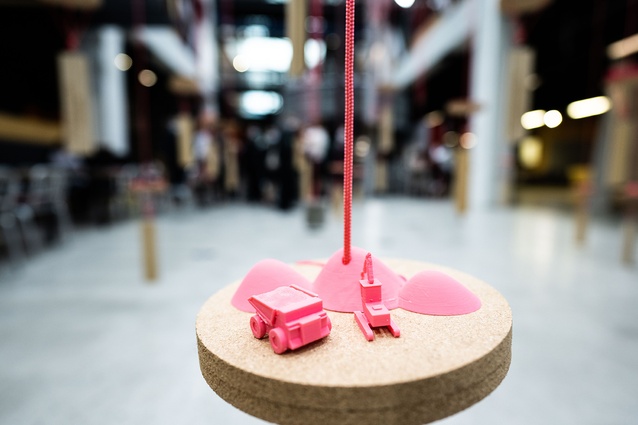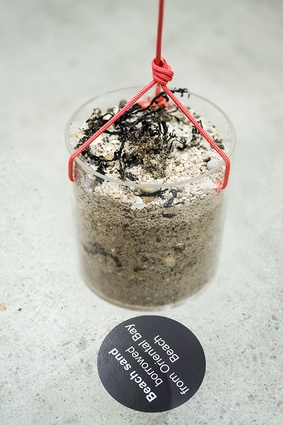Ko Wai Au? | Who Am I?
Interweaving themes of politics, economics, culture and ecology, two art installations at Te Wāhanga Waihanga-Hoahoa hold up a mirror to prevailing settler-colonial human-land relations in Aotearoa.
The installations, one by landscape urbanist Dr Hannah Hopewell; the other by Toronto-based experimental design practice Lateral Office, arose from overlapping concerns regarding land modification, urban sprawl and the intensification of agricultural practices. Significantly, the installations assert soil as the disregarded medium upon which all life depends, raising questions about human-soil relations within the built environment.
Each installation looks beneath catastrophic environmental impacts of the Anthropocene (i.e. the current geological epoch of considerable human impact), to open a window on systemic causes, highlighting the often unseen forces acting upon the whenua. Collectively, the works are tangible, interactive and affective, offering an approach of ‘thinking with soil’ thereby generating attention towards the more-than-human world in a time of accelerating spatial and environmental injustice.

‘Ko Wai Au? | Who Am I?’ curated by Dr Hannah Hopewell, is a sonic, photographic and material-based installation that “holds space for the vitality of soil – in of itself.” Comprised of three components, the performative piece locates 4m3 of soil from Ngāti Toa Rangitira rohe to the streetscape-facing Window Gallery. The soil is displaced residue as a result of grading practices at one of Porirua’s housing developments and stands in for a much larger quotient of ‘homeless’ earth. Here, the soil is less an object of study, and more a way to “defamiliarize the familiar,” turning attention to how soil’s integral living component is a blind spot in land development practices. Post the installation, the soil will be resettled and reconciled back into the rohe.
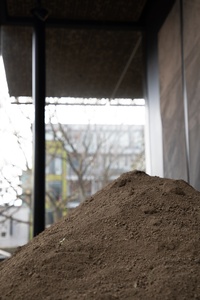
The provocation Who Am I? in this context raises several compelling questions: What is soil comprised of? How do we hold a space for healthy soil? What is soil’s relationship to place within Aotearoa? These ontological and political questions draw attention to settler-colonial and land development processes that evidence indifference to the earth. Through this work, Dr Hopewell aims to “illuminate violence in the deemed mundane and every day, rather than exploit the spectacle of crises.”
The second component ‘Because this is not a neutral scene’ bares “witness to the perception of soil trapped in a form of anthropocentric contemplation.” The looped 10-minute recorded poetic lays bare environmental injustices that Dr Hopewell outlines as being pre-determined by development practices, wherein requiring flat land for their architectural products, relentlessly efface existing topographies. The spoken word poetics mobilizes the author’s speculative way of thinking through complex issues by giving voice to the soil itself:
“I’m 4 of 60
leftover unwanted
from the muddy waters of urbanisation.
Cut raw and exposed
My cover is blown windward
My transience capitalised
cannibalised.
480,000m3 of me was shunted
Some of my body, it is said, is just unsuitable.
Yet who are you to say?”-Excerpt from ‘Because this is not a neutral scene’
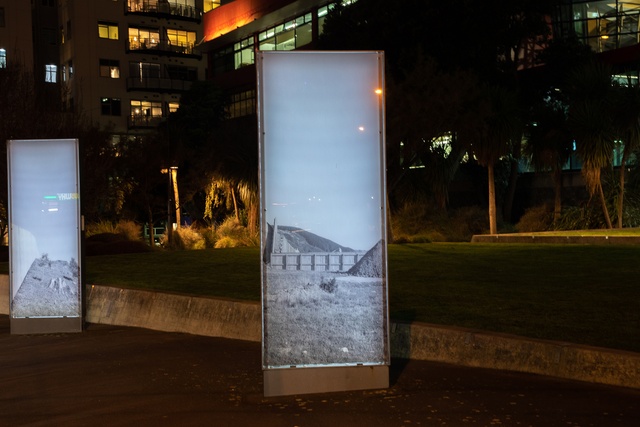
The final component ‘Ko wai hoki koe? | Who the hell are you?’ is housed in Wellington City Council’s Lightboxes on SH1 at Vivian Street. These four 2.7m high photographic images, invite passers-by to explore the specific and situated connections between soil and the capitalist operations of accumulation and possession. In conversation with Dr Hopewell, she suggests that the pursuit of flatness has become so ubiquitous as a ‘logic’ to service slab-at-grade housing construction technologies, it unfolds almost invisibly and without question. Hopewell continues by saying that flatness is so deeply embedded in the cultural imaginary of settler-colonial processes governing Aotearoa, that it continues to rationale radical topographic manipulation, soil deformation and resulting ecosystem breakdown. This work seeks to challenge this dominant stance and makes “…an appeal to built environment designers to recognise the relational, political and cosmic value of soil beyond anthropogenic demands.”
Land (Im)Balance, the second exhibition that was on offer, playfully suspended itself in the heart of the atrium. Curated by Lola Sheppard and Mason White, the partners behind the Toronto-based Lateral Office, Land (Im)Balance borrowed soil from sites across the motu and hung them in transparent cylinders above the ground. Taking the time to stand with the whenua present here, you could follow the traces and trails of the suspension wires and see them lead to the various forces that act upon the land.

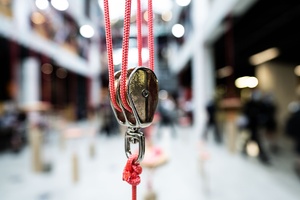
The curators offer Land (Im)Balance as a visual diagram, highlighting an “archipelago of different land types” modelled in the form of land surface fragments on cork discs. Soil from a 400-year-old native forest in Te Horo sat in contrast to a model of a monocultural pine plantation, connected by cord rope, drawing direct linkages between the two and inviting visitors to participate in negotiating the perceived balancing act of anthropogenic activities on the land. The beauty of this installation lay in the ability of the visitor to physically address the balance of the exhibition by moving the models on the pulley system, re-adjusting and re-aligning the individual components and watching how these impacted the rest of the exhibition.
The team behind Lateral Office talk of the different anthropogenic desires made visible within the model but that, in the end the “ultimate weight is in the soil itself, the land.” This thickness and layering of the soil in transparent cylinders could be viewed as a method of contemplation into how soil and society are deeply entangled, evidenced by the stories Lola and Mason tell of the people who have gifted soil for the exhibition. Borrowed from sites across the country with the help of numerous friends, fellow academics and mana whenua, each ‘bucket’ of soil embodied a multi-layered story of the deep-rooted connections between people and place — connections that the pair say they have felt honoured to learn a little about.
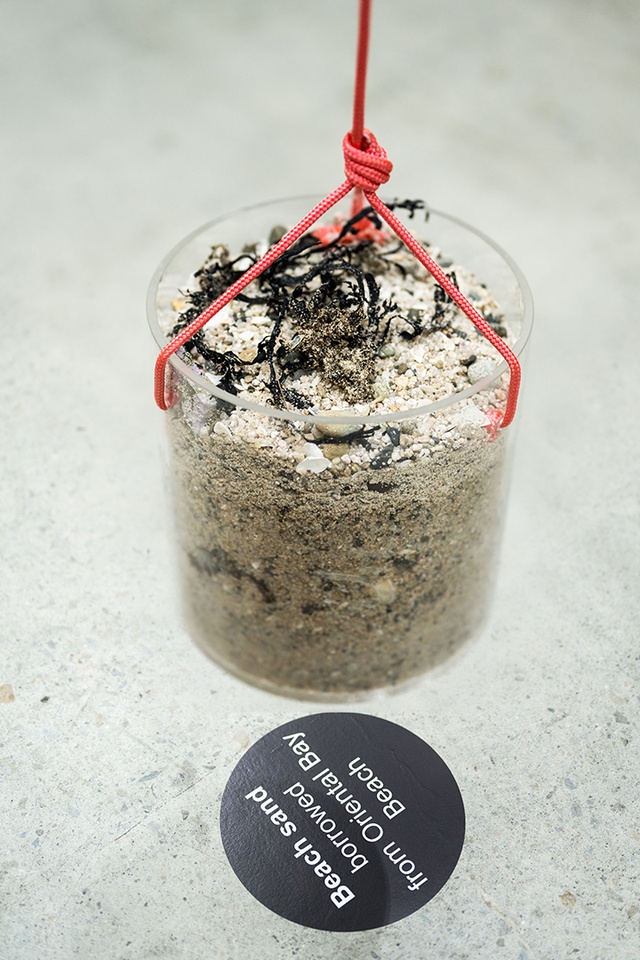
With hints of an evolution of the duo’s previous work ‘Soil Horizon’, Land (Im)Balance foregrounded the often-unseen thickness of the landscape and the variety of life that lies below the surface in the multiplicity of soil types. Displaying a unique architectural style that aimed to tell stories and spark imaginations, this installation rendered visible the deeply embedded environmental and political conditions that often escape the human eye by developing a language that translated these issues into relatable visual diagrams, provoking the viewer to scrutinize power relations and spatial and environmental injustices present in Aotearoa.
Architectural installations, like the two presented here, have the potential to inform discussions on the future of human-soil relations and encompass not only critical interrogations of current conditions but ask questions of human-nature relations outside the anthropocentric ontologies encased by settler colonialism.
Ko Wai Au? will be on display at Te Wāhanga Waihanga-Hoahoa until 30th September 2022.
Land (Im)Balance was on display at Te Wāhanga Waihanga-Hoahoa until 28th August 2022.
Ko Wai Au? was made possible with funding provided by Te Herenga Waka | Victoria University of Wellington and Wellington City Council.
Funding for Land (Im)Balance was kindly provided by The Warren Trust, John Daish and Athfield Architects.
Dr Hannah Hopewell is a tangata Tiriti landscape architect, urban designer and educator. Hopewell currently practices at Wellington Faculty of Architecture and Design Innovation / Te Wāhanga Waihanga-Hoahoa and Kaupapa Māori TOA Architects.
LATERAL OFFICE, founded in 2003 by Mason White and Lola Sheppard, is an experimental design practice that operates at the intersection of architecture, landscape, and urbanism.

